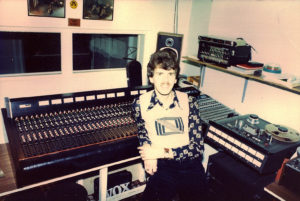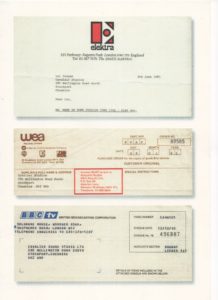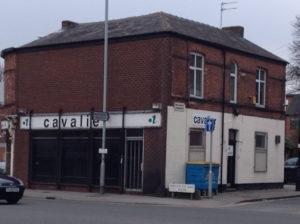How to Build a Commercial Recording Studio
Hi, I’m Lol Cooper.
If you are starting out on a new venture, there are usually a whole host of ground rules to consider. Certainly, building a studio from scratch will require research, knowledge, an understanding of the industry and purchase of equipment. You must consider premises and location, noise getting in and noise getting out. Easy access for clients and large musical instruments is crucial. Be sure to source all the correct building materials at the right price. Create an in-depth business plan clearly showing your investment in time, property (bought or rented), building work, kit etc. Then carefully work out an exact price per hour to get a return on your investment along with a reasonable profit.
I did none of the above!
I have run Cavalier Studios since 1980 and just made it all happen. At 22 I had the opportunity to rent some old dilapidated rooms above a shop in 1978. The location was all wrong, it was upstairs, the rooms were a mess, the ceilings leaked and the traffic noise outside was deafening. So was this the wrong choice for a recording studio? No. Reason – it was booked out solid 24/7 well into the 90s.
With the help of my brothers and some friends we spent 18 months of our spare time knocking the building about, and with truckloads of Rockwool managed to completely soundproof the entire upstairs from the horrendous racket outside. I remember shifting 1,800 bricks upstairs on my own one evening to brick all the old twin leaf sash windows and fire places. Very quickly learned about Michael Faraday and built the much needed ‘cage’ taking RF to earth via a seven foot copper rod in the cellar (which is still there today). The fact it was on the first floor caused a few problems over the years, like when Paul Burgess turned up from Strawberry Rentals with a Hammond C3 which wouldn’t fit through the door. This was for a Norman Beaker album so we just used a DX7 – ouch! Norman liked it anyway.
I had no strategy whatsoever, I just got stuck in, I was young, I was enthusiastic and had loads of ambition. I had planned to buy a new car and decided to put this money into the new venture, along with as much as I could possibly borrow from the bank on a 5 year BDL. I constantly invested more and more: in 1983 £2500 on a Linn Drum Machine, in 1984 £4500 on a Yamaha C3d Grand Piano and so on, 1987 £55,000 on a 2 inch Otari 24 track and TAC Matchless 72 channel mixer. Then came TV and hundreds of grands spent on broadcast cameras and digital editing gear. The point being that if you deliberate too long and agonise over investments you’ll never do anything. It seemed that with each larger investment, the work just increased exponentially.
There was no business plan, just an initiative from my father to place an ad in Yellow Pages, and the work just poured in. Within 6 months I was working with the likes of EMI, London Records, WEA, Stiff Records, Siren 10 (Richard Branson), Elektra and many many more. Across the years I took on more and more staff to a maximum of 16 full time, created video production and duplication departments, worked for major blue chips and broadcasting companies, all from the run down premises. I eventually bought the building along with the one next door. It turned out I had bought a ‘landmark’ building and remained there for 38 years.
It’s not all about technical ‘know how’ and bullshit, I always thought it was about communication and people skills, coupled with a reasonable knowledge of the music industry.
So, bad location, little knowledge, no master plan – complete and utter success – probably just right place and right time! That’s life!





